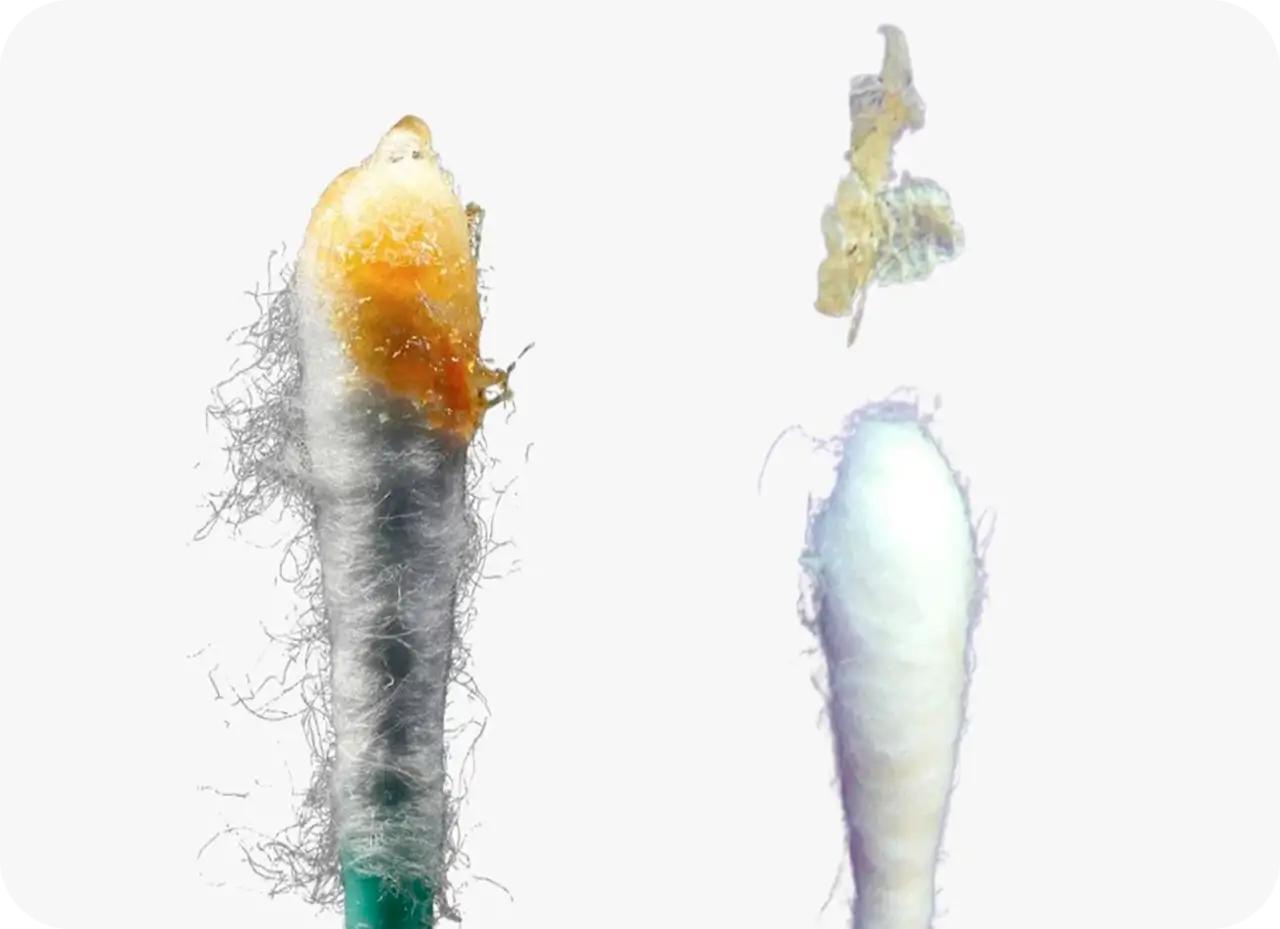Earwax is a naturally produced sticky substance in your ears that protects against pathogens. it also prevents the entry of these micro-organisms into the inner ear and reduces the risk of ear infections. Due to the slightly acidic nature of earwax, any living organisms entering the ears are trapped and killed by the insects.
Sounds quite interesting, right? Want to know more? The wax produced in our ears is of two types. It can either be dry or wet. Wet vs Dry earwax: Which one of the two is better? Let’s discuss the key characteristics, benefits, and side effects of these types.
Table of Contents
- Part 1: Wet Ear Wax: Characteristics and Factors
- Part 2: Dry Earwax: Characteristics and Factors
- Part 3: Is Wet or Dry Earwax Better?
Part 1: Wet Ear Wax: Characteristics and Factors
Wet earwax is a more common type of earwax which is more soft and usually seen in yellow to brown color. Since wet ear wax has more lipids as compared to a dry one, it is stickier and thicker. Let’s see what other characteristics this sticky substance has:
Why is My Earwax Wet?
The formation of dry or wet ear wax primarily depends upon genetics. Africans, Caucasians, and Europeans produce wet ear wax more commonly. It depends upon the genes. People with GC and GG genotypes have wet ear wax. Want to know an interesting fact? Those with wet ear wax production usually sweat more and have smelly armpits because of their genetic makeup.
Till now, we have discussed normal wet ear wax production. However, if the wax is abnormally more flowy and is associated with other symptoms like pain, smell, feeling of fullness, and tinnitus then it is an indication of any ear health problem. You should immediately get your ear checkup done by a professional.
Potential Advantages of Wet Ear Wax
- Wet ear wax is a lubricant for your ear canal and reduces the resistance between any foreign bodies and the sensitive auditory structures
- It can trap foreign bodies more effectively as compared to dry ear wax thus preventing them from invading the eardrum and inner ear
- Since wet earwax has antimicrobial properties and is slightly acidic, it can trap and dissolve the bacteria that enter your ears and prevent infections
- Wer earwax has a more flowy and soft nature so its movement out of the inner ear towards the outer ear is more smooth. This movement occurs due to the movement of the jaw and is necessary for wax removal from ears
Potential Disadvantages of Wet Ear Wax
Till now, no scientific studies have mentioned the disadvantages of having wet ear wax. Those with the natural production of wet wax in their ears might face the following problems:
- Since wet ear wax has a more sticky nature, it might be difficult to remove it from ears. Even after very precise attempt, some wax might still remain stuck to the ears
- There are more chances that wet ear wax might cause ear impaction. It increases the risk of discomfort, hearing problems, and infection in the ears
- The genes responsible for wet ear wax production are also associated with odor. So, wet earwax might have an unpleasant odor
Part 2: Dry Earwax: Characteristics and Factors
Dry ear wax is produced in smaller amounts as compared to wet ear wax. It is also less common and is usually observed in the Native American and East Asian Populations. What does dry earwax look like? It is dry, flay, and has a white-gray appearance. The presence of wax in ears for too long can also make them appear yellow or brown. Furthermore, dry ear wax is less sticky.
Why is My Earwax Dry?
Similar to wet earwax, the production of dry earwax in the ears is attributed to your genes. It is due to the presence of a variant in the ABCC11 gene. This gene not only results in the production of dry earwax but also reduces the production of sweat and makes the armpits less smelly.
As discussed earlier, the production of dry earwax is normal in the East Asian population. However, dry flaky earwax can also indicate an ear infection, skin allergy, eczema, or the accumulation of earwax for too long in the ears. There might also be other associated symptoms like itching, swelling, and redness around the affected side.
Potential Advantages of Dry Ear Wax
- It is less likely to get impacted in the ears and falls easily out of the ears
- Dry wax can easily be removed from the ears
- A dry ear environment is less favorable for bacteria to grow therefore there are fewer chances of developing ear infections
- The gene responsible for producing dry ear wax also reduces body odor and sweating so dry wax is less smelly as compared to the wet typePotential
Disadvantages of Dry Ear Wax
Similar to wet earwax, there is no scientific evidence that mentions the disadvantages of dry wax in the ears. Here are some possible problems that can be faced by those with dry ear wax production:
- Due to the less sticky nature of dry earwax, the foreign particles cannot stick efficiently with the wax. Therefore, there are chances that the ears with dry wax might develop infections easily
- Since the wax has a dry nature, ears are less lubricated thus increasing resistance and making the ears more sensitive to foreign objects
Part 3: Is Wet or Dry Earwax Better?
What is the difference between wet and dry earwax? Which one of the both is better? Wet earwax has more moisture content. It is more viscous and has a soft consistency while the dry ear wax has less moisture content, is brittle, and less viscous. Dry wax is easier to remove and less likely to block the ears. It has no odor and has a lower chance of developing infection as bacteria cannot grow in a dry environment.
On the other hand, wet wax provides a stronger barrier against pathogens, has better lubrication, and protects the ears from contact with dust and dead cells more effectively. Ultimately, both these types of ear wax have their own advantages and disadvantages.
What matters the most is how you maintain your ear health. Going for regular checkups, protecting ears from dust, and drying them after every swimming session can help reduce the risk of ear complications. In addition, you can also use the Bebird Note 5 Pro camera to keep a check on ear health. It can help you ensure that there is no anomaly in your ears without going to a professional.
Conclusion
Both wet and dry ear wax are normal and their production depends upon the genes and ethnicity. Africans produce wet ear wax while Americans have production of dry ear wax. In Asia, the production varies from region to region.
Wet wax is softer and stickier thus protecting the ears from micro-invaders while dry wax is easier to clean. But, one thing is for sure! The ear problems do not develop as long as you maintain ear hygiene regardless of wax type. Therefore, ensure proper cleaning practices to keep the ears healthy and prevent any problems.
















Leave a comment
All comments are moderated before being published.
This site is protected by hCaptcha and the hCaptcha Privacy Policy and Terms of Service apply.